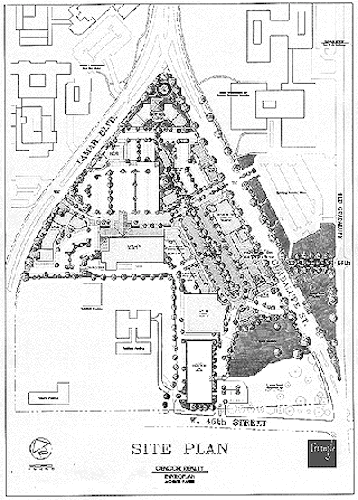
(Image Credit: austinchronicle.com)
This is most likely my last post of the semester, and I thought I spend it writing about development trends in Austin. Anyone who has lived here for more than a few years should be keenly aware of just how quickly this city is changing. Even my landlord is complaining. Well, he’s not technically complaining, but as soon as he has a vacancy to fill, it’s taken, and I think part of the game has been lost for him. But I digress. One of the things about expansive growth in Austin is that it tends to not coincide with urban planning, as I noted in a previous post about the Texas Capital Building. This lack of planning can be frustrating to locals because, well…it’s not Paris. But there’s charm in the city’s architectural idiosyncrasies, and these things do give the city a sense of character. Austin’s a lot like the grimy sci-fi of the original Terminator film, especially when compared to the forensic cleanliness of Star Trek’s sci-fi. So, anyway, there’s a weird thing happening throughout Austin’s current growth spurt, in which planned communities are popping up in the middle of old non-planned neighborhoods. Two questions come to mind: Does it really matter that these communities are planned given the irregular historical zoning beauty that surrounds them? And, secondly, what’s the appeal of these antiseptic neighborhoods, when Austinites could have…well, Austin?

(Image Credit: www.buryinc.com)
Two of these neighborhoods immediately come to mind. “The Domain” shopping area, east of Mopac and north of 183, and “The Triangle,” which is located where Lamar and Guadalupe merge. Anyone reading this who frequents Austin’s hipper areas is probably rolling their eyes at this point – The Domain and The Triangle are not really places where people hang out (no offense). They’re places you go to if you want to visit Office Max or Louis Vuitton. (I didn’t even know how to spell “Vuitton” when I started writing this post.) In a nutshell, each of these planned neighborhoods offers retail space at street level, and apartments or condos above. Rhetorically, it’s quite obvious that these neighborhoods are trying to approximate the European high street. However, in my mind there are two very deep differences between what you find in Europe and what’s popping up in Austin. In most these European urban spaces it’s easy to walk out from where you live and purchase the necessities. In these new Austin neighborhoods, the idea is that you walk out from where you live and purchase luxuries. The second rather obvious difference is that in Austin, these planned urban spaces are suburban. They’re for away from the center of town. So once your mind breaks through the nictitating haze of superfluous consumption, it’s really quite hard to figure out what the appeal of living in these areas is.

(Image Credit: austintowers.net)
To be fair, housing is at such a premium in Austin at the moment, that you can’t really blame anyone for living anywhere. And I guess, really, Office Max and Louis Vitton – I mean “Vuitton” – wouldn’t be putting shops in these places if there weren’t consumers ready and waiting to pounce.

Recent comments
2 years 29 weeks ago
2 years 44 weeks ago
2 years 44 weeks ago
2 years 50 weeks ago
3 years 4 weeks ago
3 years 4 weeks ago
3 years 4 weeks ago
3 years 6 weeks ago
3 years 6 weeks ago
3 years 6 weeks ago